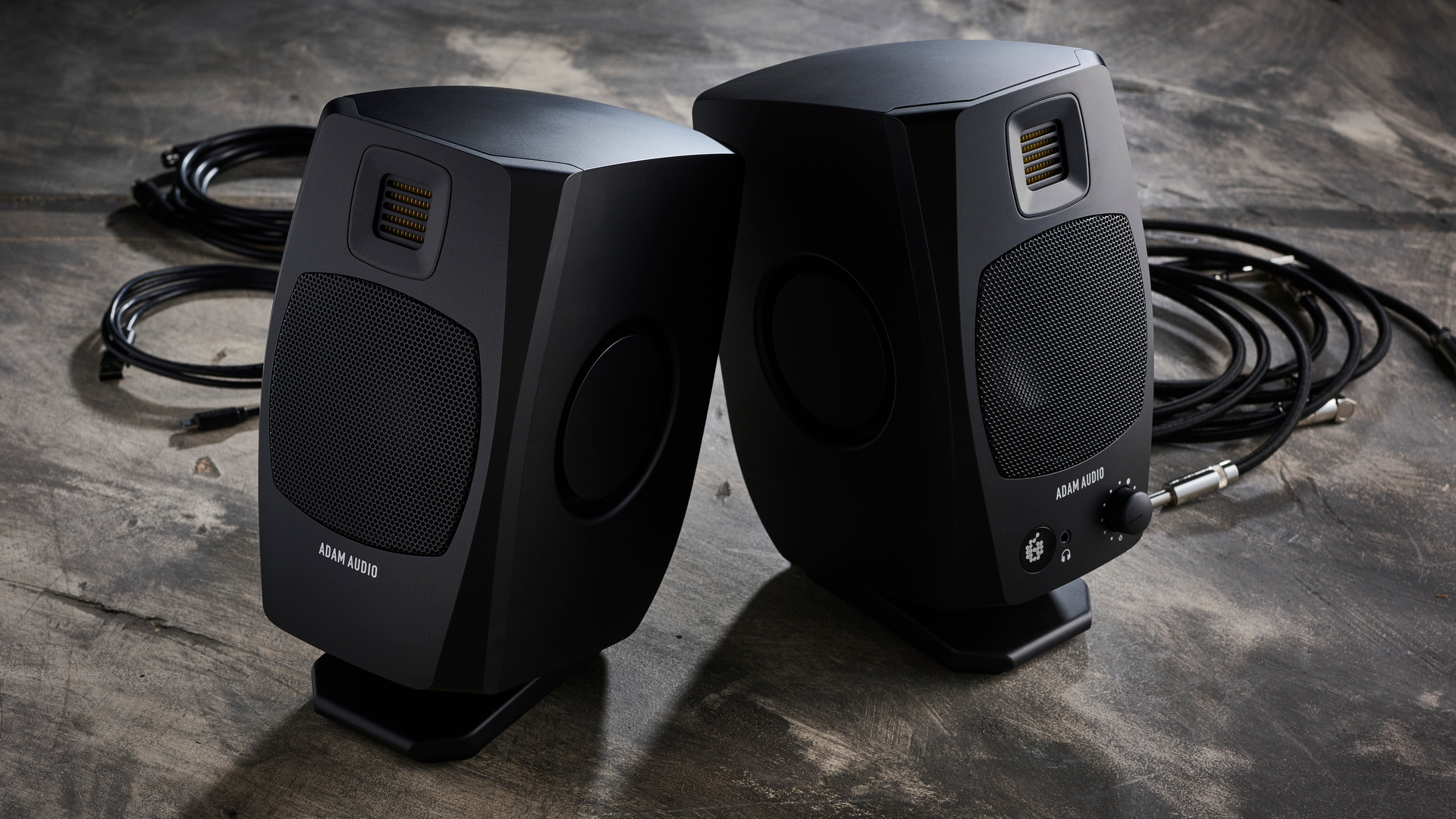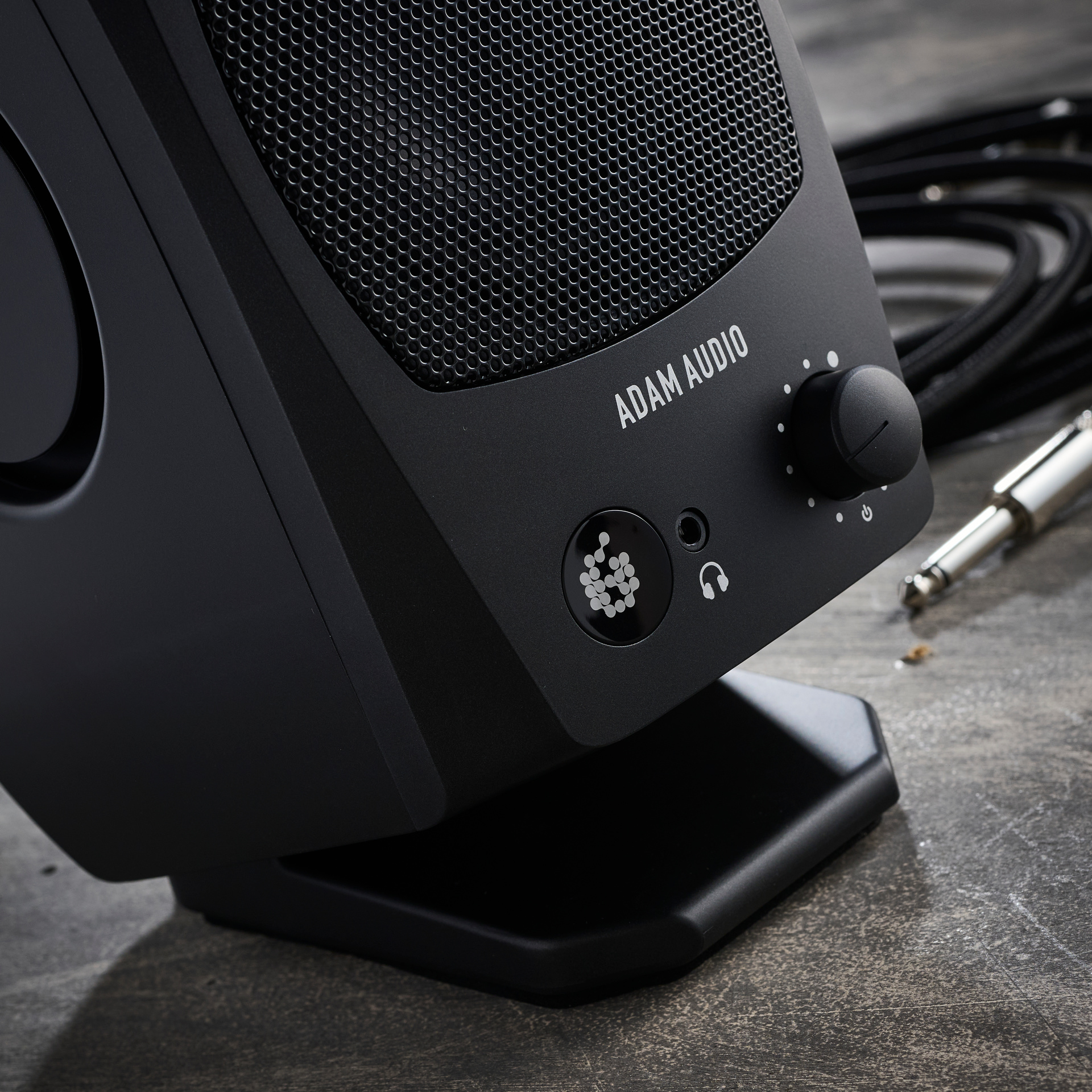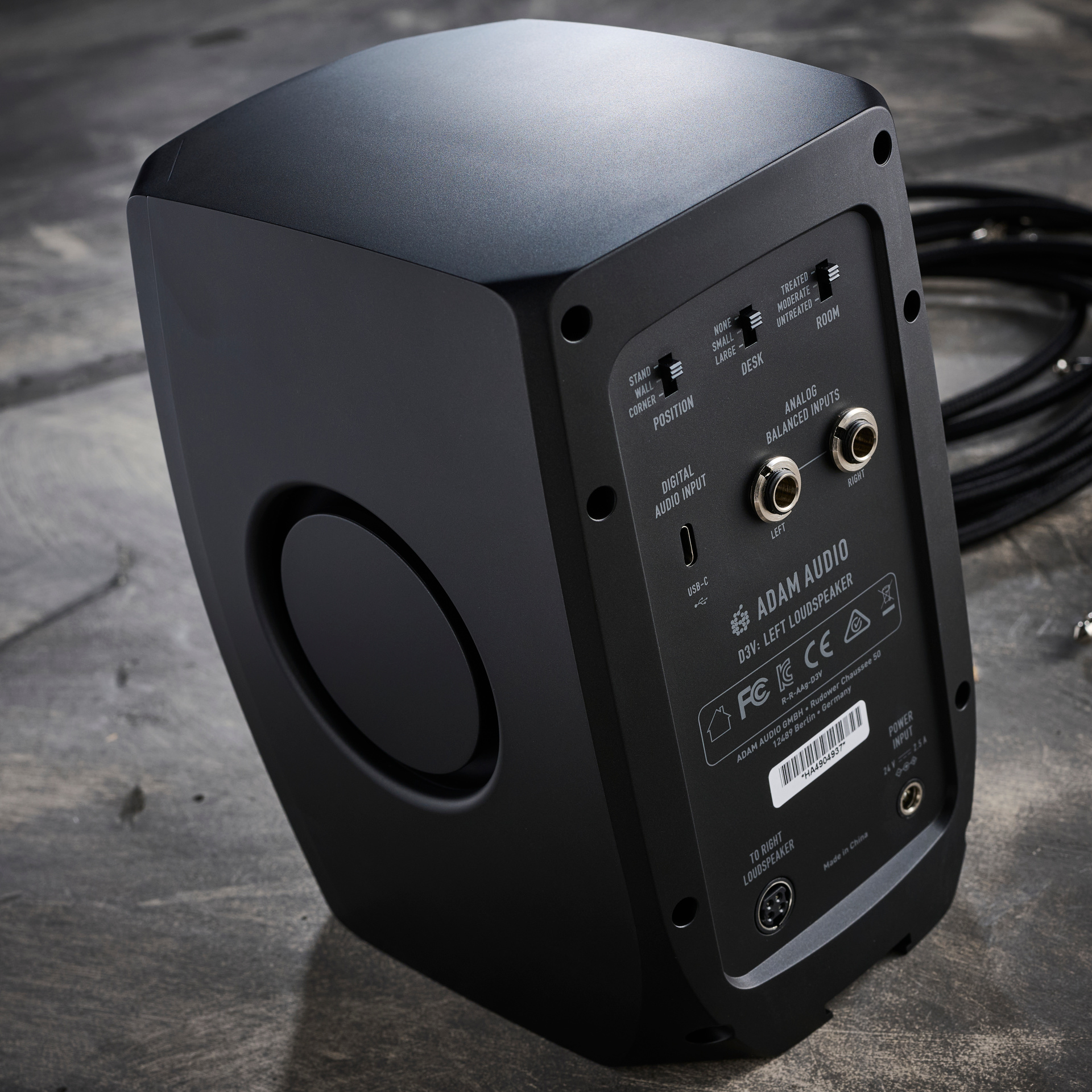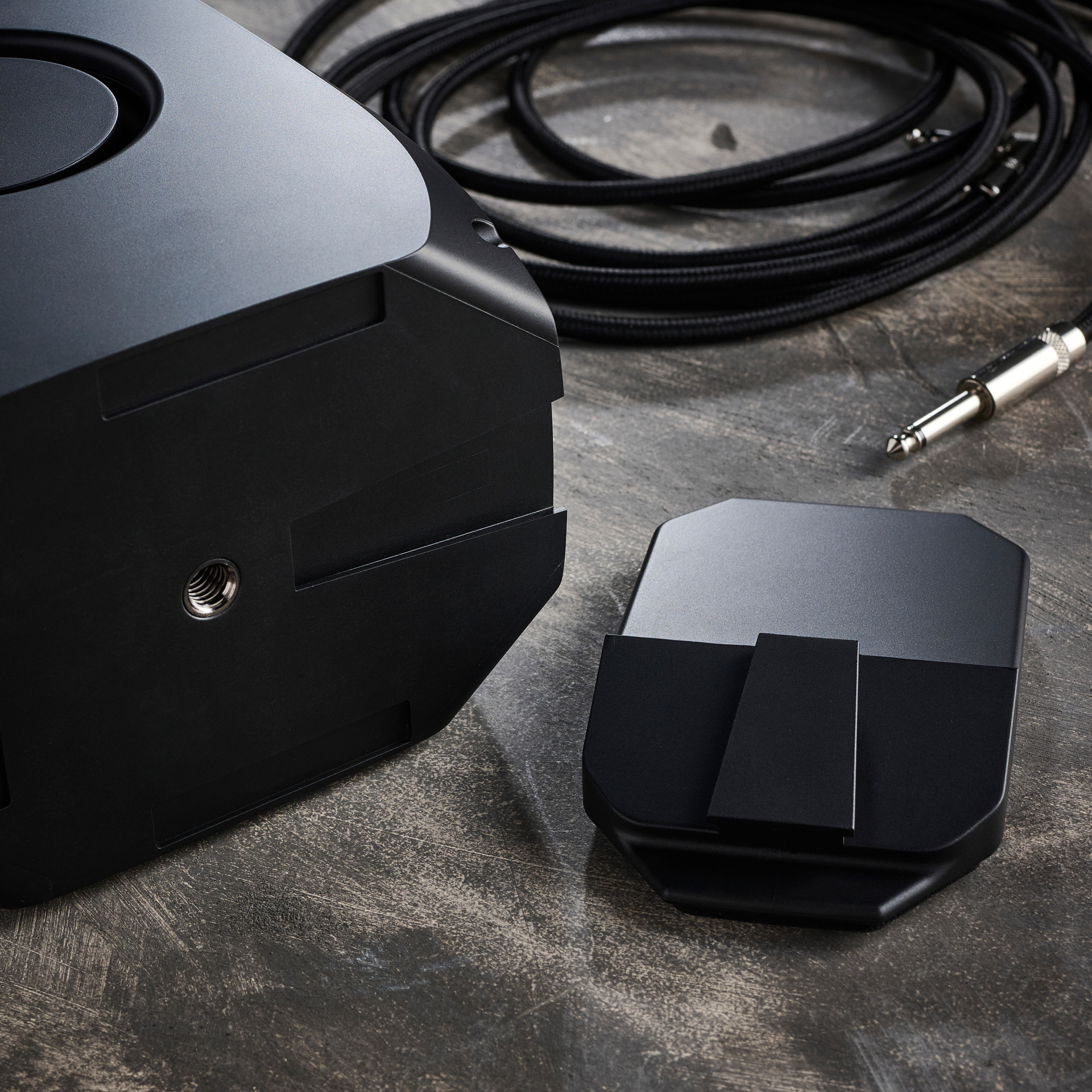
What is it?
Adam Audio has carved out an enviable reputation for quality reference monitors, combining bespoke LF drivers with its own AMT ribbon tweeter designs to deliver both accurate and engaging monitors. Its three ranges (S, A and T) have now been joined by a new desktop design that’s aimed squarely at producers, songwriters and desktop media users.
The D3V is an ultra-compact active desktop monitoring system that’s available in black or white to suit your colour scheme. The speakers are sold as a pair, and employ a primary and secondary speaker configuration, with the left speaker handling inputs, power, room settings and amplification. The included 2m cable then connects to the right-hand unit.
The speakers have a two-way design with bass extension provided by dual 3.5” passive radiators, one on each side. Woofers are 3.5” single-piece aluminium, and tweeters are D-ART ribbon designs with a 48mm equivalent diameter. Meanwhile, the amplification is class D (70W for LF and 30W for HF). The enclosure is moulded PC-ABS with chamfered corners to match the styling of other Adam designs. They can be flat-mounted vertically (stick-on pads are included) or stand-mounted using the bottom positioned ⅜” mic stand thread. The box also includes a slot-in angled stand, which we found perfect for desktop use.
Inputs are analogue (¼” TRS jacks) or digital (USB-C), with power via an included PSU. There are also three EQ options that adjust the bass (Position), low-mid and mids (Desk), and treble (Room Acoustics) respectively. Meanwhile on the front is the volume / power button, LED indicator and 3.5mm headphone output.

Performance
The D3V is a turnkey product and the box includes everything you need to get started. If you’re connecting to any kind of computer, the USB-C connection provides easy integration with no need for an audio interface. Meanwhile, for standard connection, you’ve got balanced analogue inputs.
The volume knob doubles as a multifunction push button selector and power switch, and you use this to set input type, standby mode and activate mute. The multicoloured LED logo indicates the active input mode (blue for USB input, green for analogue input). The D3V’s USB-C connection also supports firmware updating.
Setting up the D3V is reasonably straightforward, and the manual includes some useful tips with regard to positioning. One key aspect that’s worth remembering is that the passive radiators need clear space on either side. This isn’t an issue if you position them on the tabletop, but sitting them closely adjacent to other monitors is not ideal.
In terms of room correction, the three EQ options are all cuts. With these flat, unless your room is highly treated and you’ve stand-mounted them in free space, you’ll likely find this needs adjustment. For our space, we found both the treble and bass (Room and Position) needed changing, and we set them to -1.5dB and -3dB respectively.

For us, setting the Desk option was less obvious. This cuts both low mids and mids, and as is often the case with very compact monitors, the low mids are quite restrained. On balance, we preferred the middle setting (-3dB low mids and -2dB mids), which worked well with the -3dB bass setting.
Overall, this combination delivered punchy but controlled lower frequencies. What’s more, we found the low frequency extension workable to about 50Hz (spec quotes -3dB at 48Hz), and bearing in mind the small footprint (115mm wide and 150mm deep), this puts them on a par with plenty of regular (and larger) nearfields.
Finally, with regard to the high-frequency delivery, ribbon tweeters are sometimes criticised for their limited vertical dispersion. Here, this is not noticeable unless you are sitting very close, and the horizontal dispersion is impressively wide. Overall, the high frequency delivery sounds natural and the imaging is precise.

Verdict
Compact desktop monitors vary in their features, and with no Bluetooth, analysis based room calibration or subwoofer output you might conclude that the D3V comes up short. But that’s far from the case, as the D3V really delivers on size, sound and price. Highly recommended.
Hands-on demos
ADAM Audio
Alternatives
Specifications
Price |
$350 | £290 | €325 |
Key features |
Configuration: 2-way with dual passive radiator AD converter: 24-bit, 48kHz USB: 16-bit, 48, 44.1, 32kHz Frequency Response: 48Hz to 22.6kHz (-3dB) Colour: black or white Connectivity: TRS analogue input, USB-C digital input, 3.5mm phones output Crossovers: 4kHz Woofer: 3.5” Passive radiator: 3.5” 2 per speaker Tweeter: D-ART ribbon equivalent diameter 1.9” Amplification: LF 70W RMS (Class D) HF 30W RMS (Class D) |
Dimensions |
200(h) x 115(w) x 150(d) mm |
Weight |
3.58kg per pair |
Contact |







